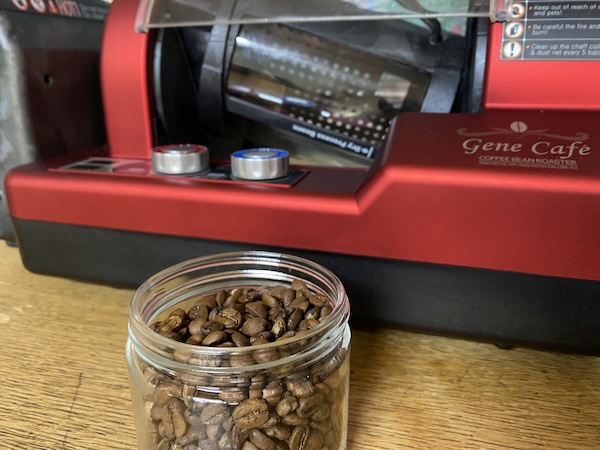Home Coffee Roasting: Learning to Crawl
 For the same reason I brew beer, bake bread, and shave with a straight razor, I recently started roasting coffee at home: to better understand, ritualize, and perfect the otherwise mundane things in my life. I don’t know why I have this need to iterate, document, and improve. It could be in me innately. It could have been learned from a career in software. Whatever the reason, I feel compelled to understand coffee from an artisan perspective and blog about this journey along the way. Much like homebrewing, the home coffee roasting scene is mature and there is all manner of coffee roasting equipment available across a wide range of price points. There is also a dizzying amount of information available. Because of that I’m utilizing a “crawl, walk, run” learning method to ensure I don’t have too many levers and adjustments available to me.
For the same reason I brew beer, bake bread, and shave with a straight razor, I recently started roasting coffee at home: to better understand, ritualize, and perfect the otherwise mundane things in my life. I don’t know why I have this need to iterate, document, and improve. It could be in me innately. It could have been learned from a career in software. Whatever the reason, I feel compelled to understand coffee from an artisan perspective and blog about this journey along the way. Much like homebrewing, the home coffee roasting scene is mature and there is all manner of coffee roasting equipment available across a wide range of price points. There is also a dizzying amount of information available. Because of that I’m utilizing a “crawl, walk, run” learning method to ensure I don’t have too many levers and adjustments available to me.
Beginner home coffee roasting method with Gene Cafe
I’ve now roasted 6 batches of beans using a simple two temperature phase method. The method involves:
- Pre-heating the Gene Cafe CBR-101 at 250C for 10 minutes.
- Turn the heat down to 205C, add 150g of beans and leave for 6 minutes.
- After 6 minutes I crank the temperature up to 250C. Leave it there for the remainder of the roast, 9-10 minutes for a medium/city roast.
So far this simple method has yielded great results my last 3 roasts. Along with a simple method, I’m also keeping my documentation simple. I’m tracking bean type, amount, phase 1 time/temperature, phase 2 time/temperature, and total weight loss. My hope is that tracking these numbers will help me eventually dial-in a method after I better understand the roasting process and some of the science behind-the-bean.
Limitations of this beginner friendly method
There are two downsides I’ve run into with this simple method. First, the roasts are slightly uneven, which I think is a result of cranking the temperature up to maximum. The Gene Cafe does a good job of rotating the beans around to prevent hot spots but consistency could be better. Second, this method isn’t working for dark roasts. It is charring the beans, introducing smoke and other acrid flavours. For my next dark roast I’m going to use a 3 phase process to combat the char explicitly.
Evaluation method
My weekly morning coffee routine is a standard upside down Aeropress with very soft Northwest water at 200C. This is how I drink most of my coffee made a home. On weekends, I make myself pour-overs with 20g of beans and 350ml water at 200C. My philosophy evaluating coffee is similar to evaluating cars: some are phenominal as daily drivers and some are better suited as weekend rides. I have no idea if this philosophy is flawed, but it’s the one I’m going with for now.
Why I know I’m going to love this hobby
I’m only 6 roasts in but I know I’m going to love this hobby. For a lot of reasons but I’ll list the five primary ones.
- Roasting coffee beans takes no more than 30 minutes and the total feedback loop is less than a week.
- The smell…is…heavenly.
- The potential for fiddling is infinite.
- The education potential in regards to ingredients, equipment, and methods is functionaly infinite.
- The community of nerds studying and sharing the art and science of this niche hobby is strong.
What I love most about home coffee roasting is that I get to drink my coffee every single day. I get to explore different coffee beans from different parts of the world at different roast levels and find the perfect brewing method for each of them. Most of all I get the start each day with a cup of something that is mine. And I get to analyze it on its merits, iterate, and do it again. And again. And again.